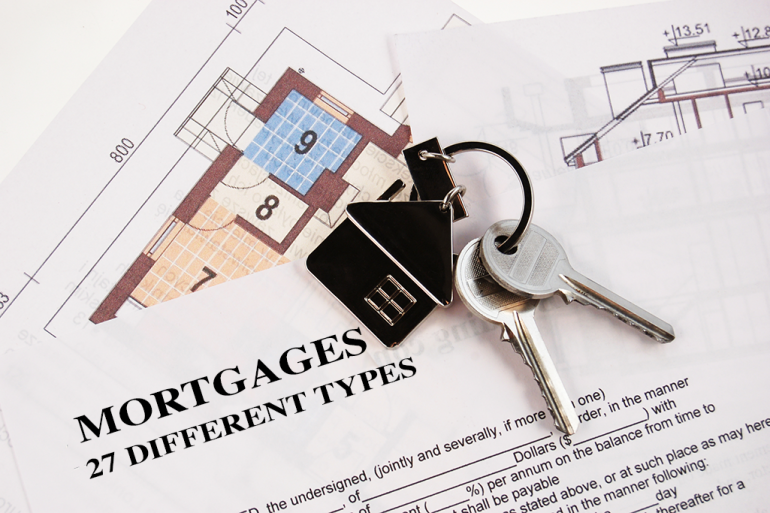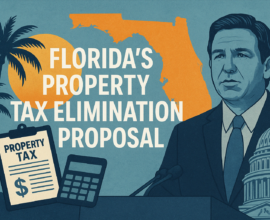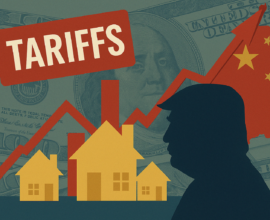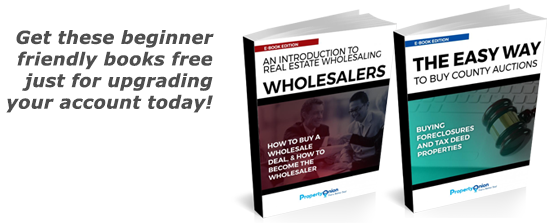Types of Mortgages Explained
Mortgages, in my opinion, have an objective definition and a subjective one. Enjoy this journey into the dry for some, fascinating for others types of mortgages explained one by one until we get all twenty-seven of them done!
The objective definition of “mortgage” is a financial tool that enables first-time homebuyers and investors, like you and me, to purchase real estate using only a small portion of their own money.
The subjective definition of “mortgage” is relative to the person you are speaking with.
To a first-time homebuyer, a mortgage is a 30-year fixed FHA loan with a 97% loan to value and close to the lowest interest rate that the market offers.
To a real estate investor, a mortgage can be a 5/1 adjustable-rate mortgage with a rate that changes every 12 months along with the market and converts to a fixed rate after the fifth year.
The reason mortgages are subjective is because there are so damn many types of them! If you have clicked the link to this article, you’ve come to the right spot to learn about them all.
Here is a list of the 27 different types of mortgages that are out there.
1: Conventional
Conventional mortgages are home loans that are sold to mortgage-purchasing conglomerates, Fannie Mae and Freddie Mac. Fannie and Freddie, as they are referred to within the industry, were created by the government to increase homeownership by making mortgages accessible.
Conventional loans are popular for first-time homebuyers who can put 20% down or as little as 3% down on a property. Conventional and FHA loans are two of the most popular types of mortgages because they help borrowers of all income levels and savings purchase a home.
2: FHA
FHA stands for Federal Housing Administration. The FHA was also created by the government to make it easier for everyone to buy homes using a mortgage. With as little as a 3% down payment, FHA loans are known for having mortgage insurance, which tacks on an additional payment to your monthly mortgage bill.
While conventional mortgages that are over 80% loan to value also have mortgage insurance, a key difference between FHA and conventional mortgages is that FHA mortgage insurance is attached to your monthly payment for the life of the loan (until you pay it off).
Mortgage insurance on conventional mortgages, on the other hand, goes away once you reach 80% loan to value.
3: USDA
USDA stands for United States Department of Agriculture, and they incentivize homebuyers to purchase real estate that is in a rural area.
The incentive is pretty significant, considering you can finance 100% of the purchase price, meaning you don’t need to put down any down payment.
To see if the area you’re looking in meets their eligibility requirements, click here.
4: VA
VA stands for Veterans Affairs, and they offer mortgages to service members, veterans, and eligible surviving spouses. Similar to USDA loans, VA loans also offer 100% financing, making them an excellent opportunity to take advantage of if you qualify.
VA guarantees a portion of your loan to the lender that gives it to you, allowing the lender to offer favorable pricing compared to other mortgage types.
5: Adjustable-Rate Mortgage (ARM)
An adjustable-rate mortgage is a mortgage that — you guessed it — has an adjustable-rate attached to it. The adjustable-rate is typically seen in a 3/1, 5/1, 7/1, or 10/1 offering. This simply means that the adjustable-rate changes once every year for up to 3, 5, 7, or 10 years depending on the option you select.
ARMs are great if you see yourself holding property for only a short time. ARMs can also be advantageous in a rising-rate environment because the base rate for ARMs is typically linked to an index like the London Interbank Offered Rate (LIBOR), which usually has rates much lower than a 15- or 30-year mortgage.
After the adjustable-rate period ends, your mortgage rate is then switched to a fixed-rate wherever the market is at that time.
6: 15/1 ARM
A 15/1 adjustable-rate mortgage is a loan that offers a fixed “teaser” interest rate for the first 15 years and then converts to an amortized 15-year loan to total a 30-year term. During the last 15 years, the interest rate changes every year (15/1).
Generally, ARMs offer lower rates than the market for fixed-rate mortgage products. The trouble is that, depending on the interest rate environment, the interest rate can go up or down.
7: 10/1 ARM
A 10/1 ARM is the same as a 15/1 ARM, except the fixed-rate lasts for the first 10 years and then is amortized over 20 years with an interest rate that changes every year.
8: 5/1 ARM
A 5/1 ARM is the same as a 15/1 ARM, except the fixed-rate lasts for the first five years and then is amortized over 25 years with an interest rate that changes every year.
9: 3/1 ARM
A 3/1 ARM is the same as a 15/1 ARM, except the fixed-rate lasts for the first three years and then is amortized over 27 years with an interest rate that changes every year.
10: Fixed
On the flip side of ARMs are fixed-rate mortgages. This is your standard “30-year fixed-rate mortgage.”
The interest rate that you lock in at the time you close on the mortgage and get the keys to your home is the interest rate you will have for the life of the loan.
In 2020, interest rates hit all-time lows, and many people refinanced their current mortgage to get a lower monthly payment with a fixed rate for 30 years.
11: Purchase
A purchase mortgage is a mortgage that is used to purchase a home. Of course, you need a purchase contract that states the current owner agrees to sell you, the buyer, their home for an agreed-upon purchase price.
Purchase mortgages can take longer to close than a refinance because there are more people involved in completing the transaction: one buyer, one seller, typically two real estate agents, typically two mortgage companies (one providing the buyer a mortgage and one that is being paid off if the current owner has an outstanding mortgage), and a title company.
12: Cash-Out Refinance
A refinance is simply changing the parameters of your current mortgage to make it more effective for your financial situation. A cash-out refinance allows homeowners to access the equity in their homes.
Let’s say your home is worth $500,000 and your outstanding mortgage balance is $100,000 — you have $400,000 in equity! How do you access it? By using a cash-out refinance.
Cash-out refinances allow you to go up to 75% loan to value, which means that you can take out up to 75% of your home’s value. In the $500,000 home example, you could take a new mortgage out up to $375,000. This new mortgage would pay off your old mortgage ($100,000), leaving you with $275,000 cash in hand to do with what you please — I suggest buying more real estate!
13: Rate-and-Term Refinance
A rate-and-term refinance is as simple as changing the rate and term of your current mortgage in an effort to reduce your monthly mortgage payment. Rate-and-term refinances hit all-time highs in 2020 due to historically low-interest rates.
Homeowners with a 4.5% interest rate on their 30-year, $300,000-dollar mortgage are paying $1,520 per month in principal and interest. In 2020, rates were around 2.5% for a high-credit borrower. If you refinanced to 2.5%, you would knock $335 off your monthly payment, saving you over $4,000 a year and over $40,000 over the first 10 years of your new loan.
Rate-and-term refinances can be done rather quickly if the borrower is on top of clearing underwriter conditions.
14: Home Equity Loan (HEL)
A home equity loan is taken out in the form of a second mortgage on your home. They typically come with a higher interest rate because they go into a second lien position on your home.
A lien is a debt against your home. Should you go into foreclosure, liens get paid off first. A first mortgage, the main mortgage on your home, is always in the first lien position. A second mortgage, or home equity loan, is placed underneath a first mortgage and is at risk of not being paid off if the borrower goes into foreclosure.
For these reasons (and considering the low-rate environment we have been in for the past decade), you do not see many home equity loans. Home equity lines of credit are more popular.
15: Home Equity Line of Credit (HELOC)
A home equity line of credit acts like a credit card against the value of your home. Let’s say you have a mortgage of $250,000 and your home is worth $600,000. A HELOC will allow you to access up to 75% of your home with an adjustable-rate (typically much lower than fixed-mortgage rates) — and here’s the kicker — when you need it.
That’s right, a HELOC is not given to you right away. You can access the money as you need it and, when you do finally use it, then you start paying interest on it.
HELOCs were very popular during the 2005-2009 housing boom because home values kept going up. People were accessing their home equity with extremely low borrowing costs (interest rates) and buying more homes with it. For this reason, people still have a bad taste in their mouth when HELOCs are brought up, but that is starting to reverse course.
If you have a plan, HELOCs can be very advantageous.
16: Commercial
All of the mortgages we have been discussing are for residential properties — that is, properties that are built for people to live in. Commercial mortgages are generally for commercial properties, which are properties that generate income from the businesses that occupy them.
For this reason, commercial loans are typically underwritten based on the cash-flow analysis instead of the borrower’s financial circumstances.
I say “generally used for commercial properties” because most bank and non-bank lenders limit the number of residential mortgages that one person can have. Right now, that limit is 10. Savvy real estate investors can only use 10 residential mortgages to purchase property, so what happens when they find an eleventh? They use a commercial loan.
17: Balloon
A balloon mortgage is typically an interest-only mortgage with a balloon payment at the end of it. This means that you have a really low monthly payment because it is interest-only (no principal), but in the end, you are stuck with the entire bill.
It is common to see borrowers refinance into a 30-year mortgage at the end of a balloon loan to avoid paying the entire balloon with cash out of pocket.
18: Interest Only
Interest-only (or IO mortgages) can be something to take advantage of as an experienced investor. They are typically offered through a 15/1, 10/1, 7/1, and 5/1 term. This means that the first 15, 10, 7, or 5 years of the loan are interest-only payments, depending on the term you select.
These are great for investors as they can drastically reduce your monthly mortgage payment on investment property, allowing you to increase cash flow and leverage that into another property!
19: Jumbo
A jumbo mortgage is a loan that exceeds “conforming” loan limits. Conforming loan limits are set by the Federal Housing Finance Agency (FHFA) each year, which makes anything that exceeds conforming loan amounts a jumbo loan.
Qualifying for a jumbo loan tends to be a lot more rigorous than conforming loans. It is a larger loan amount, meaning that the lender is at more risk. To offset that risk, it is tougher to qualify and can come with a slightly higher interest rate.
20: Non-QM
Non-QM stands for a non-qualifying mortgage. Most of the mortgage products discussed above fit into the qualifying mortgage status, which was defined after the financial crisis as loans that prove an ability to repay (ATR).
Non-QM are loans that fit outside of the QM mold. Non-QM is a broad category of loans with many subcategories of different mortgage products. For example, a self-employed borrower’s income changes on a monthly basis and looks a lot different than a W2-earner’s income, which is very consistent and reliable.
In an effort to help self-employed people and other people who have unique forms of income, lenders started accessing the non-QM side of the market.
21: Medical Professional
Medical professional mortgage loans are made for a specific group of workers — any guesses?
Yup, medical professionals! Medical professionals often have a large amount of student debt, and this can hold them back from qualifying and obtaining a mortgage.
Medical-profession borrowers are qualified on their future income, meaning they need to have proof that they
22: Debt Service Coverage Ratio (DSCR)
A DSCR loan falls into the non-QM bucket. It is a unique loan that is similar to a commercial loan but for a residential property.
A DSCR loan is strictly for residential investment properties. What makes this loan unique is that the property is what ends up being underwritten (how much cash flow will the property produce?), not the borrower.
The debt service coverage ratio is simply how much of the debt is serviced by the monthly income that the property generates. For example, a property that produces $5,000 of monthly income with a debt service payment of $4,000 has a 1.25 DSCR.
Rates tend to be higher on these products as they are offered to investors with multiple properties and debt-to-income ratios that may exceed conforming loan limits.
23: Open-End
An open-end loan is a loan that allows the borrower to access the loan amount over time. An example of this is a HELOC. As previously mentioned, a HELOC does not need to be used all at once. Instead, the borrower can access the funds when they need them and then pay interest on the amount borrowed. The opposite of an open-end loan is a closed-end loan.
24: Closed-End
A closed-end loan is a loan that is given to the borrower in a lump sum at the time of loan closing. The borrower receives the entire loan and uses it at their disposal. A mortgage is a closed-end loan because the borrower uses it to buy the home from the seller.
The seller receives the difference between their outstanding mortgage balance, and the buyer pays back the mortgage company that gave them the money.
25: Construction to Perm
A construction-to-perm (standing for permanent) loan is for a new construction property or a renovation of a current property. The borrower is given a loan for the construction to begin and, once the home is complete, the loan is rolled into a permanent loan to avoid further closing costs and extra confusion.
Without a construction-to-perm loan, funding the construction and then financing the actual property can be a strenuous process with many people and moving parts. Lenders now offer a construction-to-perm loan that removes a lot of the headaches in obtaining construction financing.
26: Seller Take-Back
For seller take-back loans, the seller acts as the bank and collects payments from the buyer once the buyer takes occupancy.
What makes these types of loans especially advantageous is that the terms can be specifically catered to the buyer’s and seller’s needs. If the seller knows the buyer and doesn’t need a lot of income, the seller can offer a low-interest rate and longer term to pay back the loan. If the seller is looking for more income, a higher rate will make more sense.
The seller take-back is a great way to find deals and make an offer stand out to a seller, especially if you can’t qualify for a mortgage at a bank or non-bank lender.
27: Assumption Loan
An assumption loan is a loan that can be assumed by someone other than the original mortgage borrower. They are only an option on certain mortgage products like a VA loan.
Lenders do not like assumption loans for obvious reasons. One big one is that the new borrower (who assumes the loan from a seller) picks up right where the seller left off. Say the seller gives the assumable loan to the buyer. If the seller had a 30-year loan at 3.5% and owned the home for five years, then the current mortgage has 25 years left on it with a market interest rate of five years ago.
Not only could the lender be making more if interest rates have risen, but they also do not know the buyer like they do the seller. These are more complicated mortgage products but something to be on the lookout for!
And there you have it! Did you know that this number of mortgage options existed?








